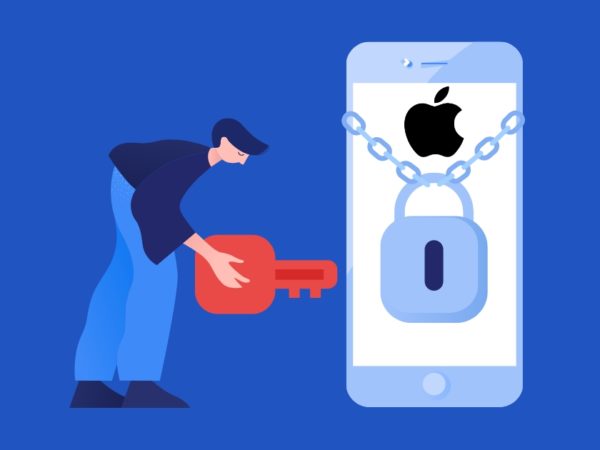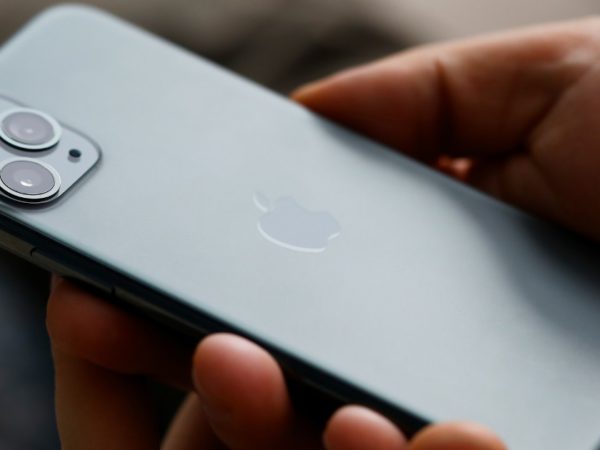Since nowadays mobile devices can do almost every task that can be done on a computer, hackers have switched their tactics. It’s very easy to get your phone infected with malware.
About Mobile Malware
Mobile malware is malicious software that specifically targets the operating system of your phone to steal private data.
Even though the threats aren’t as prominent on mobile devices as on other workstations, it’s still a serious issue that needs to be addressed and looked upon for your safety.
This post will cover everything about mobile malware and how you can safeguard yourself from it.
Let’s jump into it right away.
How Can a Device Get Infected With Malware?
There are numerous ways that your phone can get infected with malware, so you can guess that it’s not very difficult for hackers to break into your system if it’s not protected well. Beware of these practices.
Here are some of those ways:
#1. Phishing or Spoofing
One of the most popular methods of stealing your information, Phishing, is tricking people into thinking they’re providing their information to a trusted source.
For example, a hacker creates a website that looks very similar to the one you often visit and tricks you into believing you’re logging into the original website. It could be a social media platform, a forum, your banking portal, or any website on the internet.
They usually do this via email. So, the next time you receive an email saying that you need to log into the website or change your password, verify and recheck whether the email is sent from a legit source, not a hacker.
Also read: Ways to Avoid Vishing Attacks [Spam Blocking Apps]
Spoofing is similar, but instead of asking for your details, the hackers just want you to click a certain malicious link to get control over your device.
You could also receive these threats as SMS.
#2. Using a Jailbroken or Rooted Device
If you’ve jailbroken or rooted your mobile phone, you’ve sidelined the device’s internal protections and security layers to have unrestricted control of the operating system.
While this can mean you have full freedom over what you can do with the device, it also means that your device is very much prone to malware.
#3. Downloading Apps from Untrusted Sources
A lot of times, we like to download apps from third-party sources just because they’re not available officially on the app store.
Doing this is risky because the website you’re downloading the app from can be spammy, and possibly it could automatically download malicious software on your device without you noticing it.
This is one of the reasons why you should only download files from trusted sources.
Consequences of Malware
The severity of the malware actions can depend on many things, so you’re never sure of the exact consequences you might face for it.
However, here are some of the most common issues you could experience from a personal and business perspective.
#1. Loss of Sensitive Data
Depending on the type of malware, it can delete or damage files from your device. Those files can be important to you, not to mention very sensitive.
Unless you’ve had a backup of the files, there’s hardly any way to retrieve them after the cyberattack.
#2. Misuse of Your Information
Once malware enters your device, it gets a firm hold of its files. And because of this fact, your information can be misused in various ways.
Information theft is one of the most serious results of a malware attack, as stolen information can be sold to third-party sources.
These details range from your personal identity to your business’s confidential data.
#3. Slow Performance of Your Device
While not as serious and damaging as the above two consequences, a slow-performing device can be a real pain.
Malware can turn your fast-functioning phone into a rusty one clouded with spyware and trojans.
#4. Contagious Effects on the Entire Network
Once malware enters your device, there’s a possibility it can spread to all the devices that connect to the same network.
If your employees or family members operate on the same network, the malware can malfunction all of their devices by replicating itself into them.
#5. Disruption of Your Business Operation
Being barred from running your business processes smoothly is a terrible feeling, but it’s one of the common consequences of malware in your device.
As hackers get a firm hold over your company’s network, it won’t take long to disrupt the operation flow by hijacking the system and preventing you from serving customers.
Moreover, they can:
- Modify your crucial system data
- Acquire the data and sell them to your competitors
- Steal or delete research and development data
This can cost your business tons of money, energy, and brand value.
Types of Malware
There are different types of malware that your mobile device can be infected with, and the impact of each malware varies. Below are some common types of malware you need to be aware of.
#1. Browser Exploits
Many browsers out there aren’t equipped with the best security features, so there’s a huge possibility that your browser could be exploited to steal information from it. Also, the applications you run within the browser, such as PDF reader, could be targeted.
#2. Virus and Trojan
Viruses and Trojans are everywhere on the internet, unfortunately. Maybe the app you want to download contains a virus or trojan that’s ready to attack your system once it’s installed on the device.
It could do something as harmless as changing your wallpaper and language or as serious as stealing your password and banking information.
#3. Spyware and Madware
Madware, the short form for mobile adware, is a kind of malware that finds its way into your system after you install some kind of script or program.
It happens without your consent, and the purpose of it is to collect data from your device to spam you with ads.
Also, most of the madware variants out there include an element of spyware, so your information can also be sold to third-party sources.
The information can include any data, such as passwords, location, name, etc.
#4. Drive-by Download
Sometimes we can be tricked into opening a malicious website or email, and when we do that, we fall victim to a mobile malware called a drive-by download.
What it does is it automatically gets installed into your device to release a series of threats, including:
- Spyware
- Adware
- Malware
- Bots
All this can steal, manipulate and delete your data and control your device however it wants. In fact, once this type of malware gets a hold of your device, it can use to send viruses to people in your organization.
Signs Your Mobile is Infected With Malware
In most cases, it’s easy to tell something is wrong with your device because the signs get very obvious. Here are some of the many signs that your mobile phone might be infected with the malware:
- Your phone’s battery drains much faster 🔋
- Your phone experiences overheating issues ♨️
- Your phone is slowed down progressively 🐢
- You notice a new, random app on your device 📱
- You notice a lot of popups 📢
- You experience poor connection 🌐
If you notice any of those signs, you need to be aware that your device might be infected, and you have to fix it.
Tips to Prevent Getting Infected With Malware
There are a bunch of measures you can take to keep your device safe and secure. These measures will make it hard for malicious threats to enter your mobile phone.
#1. Stay on Top of Updates
Whenever you see a new update has arrived for your operating system, do yourself a favor and update it immediately because it’ll also include improved security features. Along with updating the operating system, you should also keep your apps up-to-date.
#2. Keep Only Trusted Apps
You must avoid downloading apps from untrusted third-party sources and installing apps that look shady. Double-check every app before installing it on your mobile because it might be the hackers’ doorway to your device.
#3. Don’t Click Every Link You See
Links are everywhere on the internet, but not every link is genuine. Try to slow down, notice your digital surroundings and ask yourself if the link you’re about to click is from a trusted source or does it look sketchy. If it’s the latter, then do not click it.
Phishing scams are everywhere, including your emails, text messages, and even social platforms, so you must be careful before clicking any link.
#4. Double-Check the Sources You’re Browsing
I get it; sometimes what we’re looking for isn’t available anywhere online except on that spammy little website containing a hundred popups and ads. You must be careful about those sites, as they can automatically install programs into your device without you noticing.
#5. Limit App Permissions
Every app has permissions, and it’s up to you if you want to allow them. For apps you don’t trust fully, it’s best to limit their permissions so they do not have much access to your data.
Mobile Malware Apps
The below mobile malware apps will put security at the forefront of your device.
Malwarebytes
Available for both Android and iOS devices, Malwarebytes protects your phone from scams and malicious activities. Even though there’s a premium version that you can use, it allows you to get started for absolutely no cost with their free plan.
Conducting scans and privacy audits for all apps, removing infections, and blocking ads are some of the main features of this app.
Avast Premium Security
Multiple award-winning solutions, Avast Premium Security is available for a bunch of different platforms, including mobile devices.
Here are some of the many features of this app:
- Safe and secure online shopping
- Block spyware, viruses as well as malicious app installations
- Lock photos and apps with a PIN
- Track the last-known location of your lost device
- Capture photo and audio of the thief who stole your device
- Monitor email addresses for password leaks
It also allows you to scan any WiFi network you’re about to connect to for vulnerabilities.
Trend Micro
You can download Trend Micro’s security app on Android as well as on iOS devices. It’s packed with great features and starts by blocking harmful websites, ads, personal information trackers, and unsafe WiFi networks.
It also helps you optimize your device for the best performance and eliminate suspicious apps that could potentially steal your information. You can use this app for free.
Final Words
It’s always a good idea to be safe than sorry when it comes to security, as the internet is full of malicious threats that could harm you in various ways.
This post will help you understand better what you need to do to be protected at all times.
Next, learn how to scan and remove malware from your Android and iOS device.



